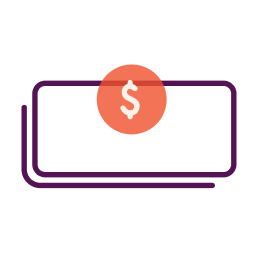As smart as the average small business owner is, it’s impossible to anticipate and prepare for every need. What’s more, what an early stage business might consider a crisis an older business might not. With that in mind, let’s talk about the pitfalls of taking a reactionary approach to tackling a businesses need for borrowed capital, some of the options and approaches to consider if you find yourself in a situation that requires cash now, and a more strategic approach to help you avoid the need for a crisis loan in the first place.
Emergency Loans Can Be Expensive
The coronavirus pandemic and the Paycheck Protection Program (PPP) were great options that helped millions of small business owners navigate the challenges associated with the pandemic. The SBA offered very liberal qualification criteria but there were still millions of other small business borrowers that just couldn’t meet the eligibility requirements and weren’t able to access this potentially free financing to help them weather the storm.
Maybe they didn’t pass the credit check because they had bad credit, or didn’t have the basic financial block and tackle in place to provide verified payroll records, or a balance sheet that showed they were a profitable business before the crisis—some didn’t even have a business bank account. That doesn’t mean they all weren’t able to find borrowed capital, but they had to turn to alternative (and often a lot more expensive) sources of capital and paid an annual percentage rate (APR) much higher than the potentially 0% interest rate the federal government was offering through the SBA’s PPP forgiveness program.
What’s more, many of the lenders normally in the market either severely curtailed their loan operations or backed out of the market completely for a time. Including some of the traditional easier-to-qualify-for sources of capital like business credit cards; or other short-term financing that is less dependent on a business owner’s personal credit score and relies more on their cash flow and business income (which was non-existent for many business owners at the time). This basically meant the alternative financing available became very expensive because lenders had to charge high interest rates to mitigate the risks associated with lending in that environment.
How Do You Better Prepare For the Next Crisis?
Using the PPP as a guide, it taught us that there are a handful of things you can start doing today that will help, should something like this (or any other emergency need for financing) ever happen again. And don’t forget, it likely will as economic cycles regularly ebb and flow. I’ve personally lived through a number of recessions throughout my career.
Here’s a list of four things to help you prepare so you can access borrowed capital when you need quick emergency funds to navigate a business crisis:
- Have a business bank account: Crisis or not, many business lenders won’t even consider your loan application if you don’t have a business bank account. The banks working with the SBA are no different. If you don’t have a business checking account, make it a priority.
- Make sure your financial records are up to date: I recognize that most small business owners don’t start a business because they are excited about the accounting process. But most lenders, particularly those who are making loans in financial hard times or when you need fast funding to address some kind of crisis, want to see that your balance sheet, P&L, and income statements are all in order. What’s more, they’ll likely want electronic access to your business bank account to confirm that you have the income and cash flow that will support the periodic payments.
- Show a profit on your balance sheet: It’s common practice for many small business owners to do a little financial gymnastics to reduce their tax burden at the end of the year by showing a loss, rather than profits. It’s understandable, but a lot of businesses just couldn’t qualify for the PPP because they didn’t have the financial records to show they were a profitable business in 2019.
- Pay attention to your personal and business credit profile: Your business credit history matters. So does your personal credit score. For example, if your personal credit score is below 650, there are options available to you but they will come with higher interest rates and more stringent repayment terms. If you don’t know your current credit situation, you can view both your personal credit score and your business credit for free at Nav.
Fast Funding Options for When Your Business is in a Pinch
Because we can’t always anticipate when a crisis will happen or when you might need quick access to some extra cash, here are a few options to consider:
- Business Line of Credit: I’m a big fan of the line of credit. It gives you access to emergency capital when you need it. You can use it, repay it, and use it again the next time you need extra cash to cover a crisis or take advantage of an opportunity. And, you only pay interest on what you use. It does require you plan in advance and have the credit line in place before you need to tap into it and you’ll need to make sure you can meet the qualification criteria before you go through the application process. Fortunately, they are also widely available from traditional financial institutions as well as online lenders—so depending on your situation, there may be a business line of credit available to you.
- Business Credit Cards: There are a number of reasons to like business credit cards, but like a business line of credit, you need to apply before you really need to access the cash. Fortunately, if you’re an early-stage business without a long business credit history, most credit card providers look primarily at your personal credit history to make an approval decision. So, if you have a good personal credit score, you’ll likely get approved.
- Online lenders: There are more loan options available today than ever before, including short-term loans to meet an emergent need. Unlike a lot of traditional lenders like a bank or credit union, online lenders offer loans in the small loan amounts you would likely need to address unexpected expenses like repairing a critical piece of equipment, addressing a plumbing problem, or any other need for quick cash. Although interest rates will likely be higher, the loan application process is quicker and easier, approvals can be the same day, and you could even have cash in your bank account the next business day. Be aware though, you’ll likely not be looking at monthly payments, but rather a daily or weekly direct debit from your business bank account.
- Cash advance financing: This type of financing comes in a couple different flavors. A cash advance is not really a loan. A Merchant Cash Advance or MCA is really more like a credit card cash advance. The MCA provider gives you an advance based on your daily credit card receipts running through your merchant account. A business cash advance is an advance based on your cash flow. This type of financing is readily available, comparatively easy to qualify for, and you can access it quickly, but it comes at a premium. Depending on the provider, the costs associated with a cash advance can be much higher than the other types of financing mentioned above. What’s more, because these providers typically don’t express their costs in annual percentage rate, they can be challenging to compare to other types of financing. This Nav calculator will help you determine the APR of a cash advance.
Strategic Borrowing
When I refer to strategic borrowing, what I’m talking about is anticipating needs and making sure a business is proactive in meeting them—when borrowing might be anticipated. I understand that many entrepreneurs tend to make a lot of decisions on the fly. Because of the costs involved, I don’t think this should be one of them.
Sitting down to plan for and anticipate the ebb and flow of the coming year, taking time to consider initiatives that might require extra capital, and honestly evaluating the ability to successfully apply for a loan is the first step. A more reactionary approach could mean the rejection of a loan application and a lost opportunity and potentially increased costs
Abraham Lincoln is credited with saying, “If I only had an hour to chop down a tree, I would spend the first 45 minutes sharpening my axe.”
Strategic borrowing is all about sharpening the axe.
This isn’t to say that you’ll always be able to anticipate when you’ll need financing, which is why some of these other options are available. That being said, the more strategic you can be in how you prepare and anticipate the financing needs of your business, the more likely you’ll be able to find the best loan with the right costs and friendliest terms.
This article was originally written on December 3, 2021 and updated on December 16, 2021.


Have at it! We'd love to hear from you and encourage a lively discussion among our users. Please help us keep our site clean and protect yourself. Refrain from posting overtly promotional content, and avoid disclosing personal information such as bank account or phone numbers.
Reviews Disclosure: The responses below are not provided or commissioned by the credit card, financing and service companies that appear on this site. Responses have not been reviewed, approved or otherwise endorsed by the credit card, financing and service companies and it is not their responsibility to ensure all posts and/or questions are answered.